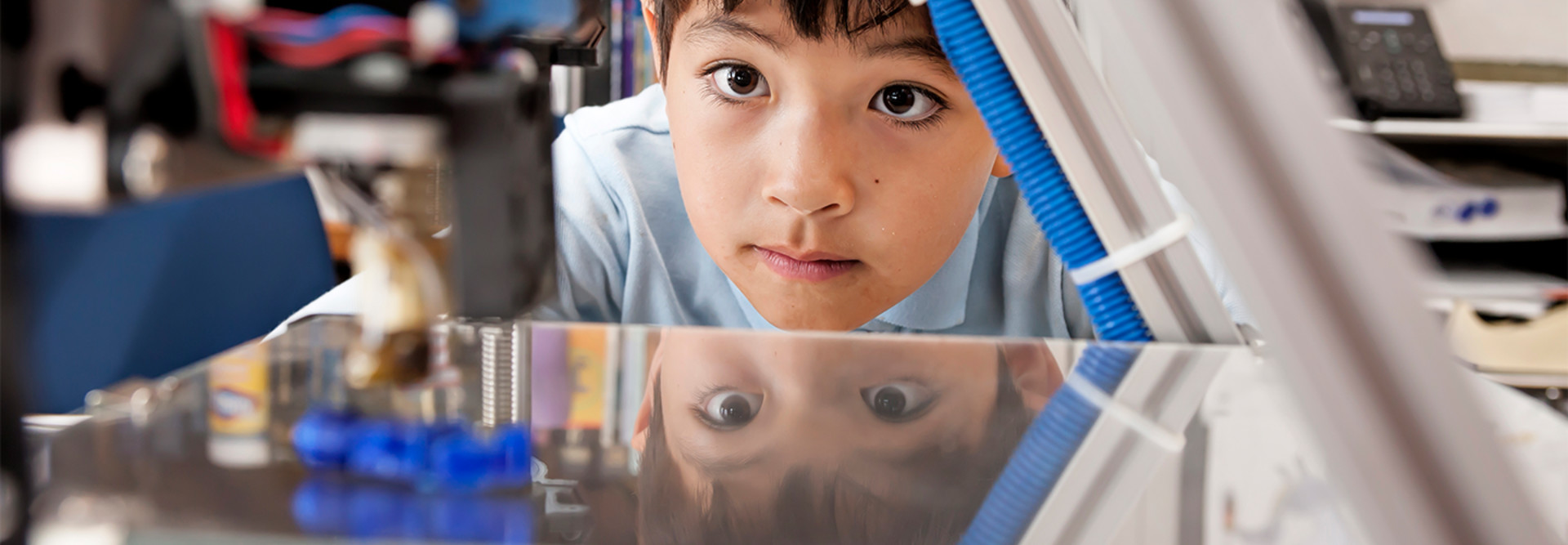4 Steps to Create a Strong 3D Printing Program
In educational technology, it can be difficult to discern a fad from a future classroom staple. When I first learned of 3D printing in the classroom, I wondered if it held merit. The more I learned about it, the more I realized the untapped potential of this technology.
3D printing is prevalent in a wide range of fields, including medicine, fashion, construction, manufacturing, aeronautics, culinary arts and many more. Bringing 3D printing technology to the classroom creates opportunities for students that are limited only by their imagination.
Young students gain a real-world learning experience with geometry and measurement, and develop spatial awareness through the use of computer-aided design (CAD) software. Older students can use 3D printing for applied physics and design.
The implementation of a 3D printing program can be broad or narrow, depending on the curriculum. Here are four ways to create a successful 3D printing program:
VIDEO: See how students used 3D printing to create prosthetics for other kids!
1. Create a Unique Vision Using Education Standards
Every successful program should start with a vision and be aligned to standards, such as the ISTE Standards for Students, specifically the standard for Innovative Designer and Computational Thinker. Additionally, ISTE addresses Common Core math standards in geometry and measurement across K–12 .
Once you have a vision, every action flows from that ideology. My vision was to increase access and equity in a science, technology, engineering, the arts and mathematics (STEAM) curriculum for elementary students.
After establishing your vision, write a goal of how you plan to achieve that vision. Having the steps outlined clearly will not only garner administrative support, but also give direction to the teachers who are implementing the program.
2. Build a Team of Teachers Enthusiastic About Tech
Teachers are the key to success with a 3D printing program, so they need training and support along the way. In my district, I started with a cohort of teachers who were willing to learn and serve as lead teachers at their schools.
We began with an initial training on the basics of 3D printing, followed by some lesson ideas. This was a lot of hands-on learning for them. Most of the participants had heard of 3D printing but had never used it. Following the training, teachers were provided support as needed with troubleshooting, model lessons and coaching.
A few months after the initial training, the cohort met again to further develop curriculum and share best practices. At the second training, the teachers learned more advanced techniques for 3D printing. Whether you follow a model like this or design your own, a growth mindset, willingness to learn and a sense of adventure are key among participants.
3. Start with Small 3D Printing Programs and Build Momentum
When implementing any new and innovative program, it’s best to start small and give it room to grow. In a focused group, you can work through issues that arise with minimal impact. This also allows for flexibility and adjustments along the way.
When the program starts to grow, it can move forward with the strength of experience behind it. Document progress through photos, videos and testimonials of students, teachers and parents. Publicize the projects the students create in district and school newsletters, on the school website and in social media. Create excitement for the project and it will grow in size and scope.
One way you can do this is to put the 3D printer in a public place — don’t hide it away in a workroom. Encourage curiosity by allowing students, teachers and parents to ask questions. As your program becomes established, don’t forget your initial adopters. Continue to support them, and you’ll find that a few teachers can make a big difference.
MORE FROM EDTECH: An innovation center in Arizona uses 3D Printers to teach STEM!
4. Develop a Project Management System for 3D Printing
Once projects are being designed and filament is melting into rockets, keychains and snowflakes, you will need a system to manage student designs that are waiting to be printed. For a single classroom teacher who manages the prints of his or her own students, Google Classroom is a great solution.
Ask students to get a shareable link of their design from Tinkercad or another CAD program and paste the link into an assignment posted by the teacher in Google Classroom. To manage multiple classes, I created a Google Form that asks for a student’s name, teacher, project, color choice and link. This goes into a spreadsheet that is easily organized for managing printing.
There are other cloud-based solutions that may work for your 3D printer. Depending on the printer type and its location, you may be able to print during the school day. Most likely, you will have to print after school and overnight. I usually have a one-week turnaround for student projects, especially if I am working with a whole class.
If you’re ready to get started with 3D printing, you will find a growing professional learning network on social media platforms. If you don’t have an expert in your area, find one or become one. Happy printing!









